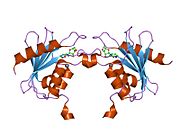My Research Project: Microbial Fuel Cells
For my sophomore research class, I did a project testing the effect of anode surface area on microbial fuel cells, or MFCs. MFCs are an experimental fuel cell type that use bacterial respiration to generate electricity. Basically, in an MFC, bacteria and sugar are placed in a chamber without oxygen with two electrodes on either side. The bacteria form a biofilm on the anode side and transfer electrons from anaerobic respiration to the anode. The cathode, which is made of platinum, is exposed to air. The platinum cathode uses the flow of electrons through the cathode to catalyze the reverse half reaction in the cell. I 3D printed two MFCs for this project. One of my MFCs had a larger surface area anode, which I hypothesized would increase biofilm formation and thus power output. As my bacteria source, I used pond sludge and mixed it with a glucose solution. I ran both fuel cells for two days, taking power readings every minute.
This was one of the most rewarding and exhilarating experiences of my life. I learned a lot about the engineering design process while designing the fuel cells. I also learned a lot about electrochemistry and circuit design while learning about MFCs. While my idea did not show that the high surface area anode increases power output, I would like to continue this project and make modifications to it to see if I can increase power output. One idea that I have is to coat the anode with gold nanoparticles, which should increase surface area at a nanoscale, which could improve biofilm formation. I really enjoyed this project and I am planning to do much more like this in the future.

